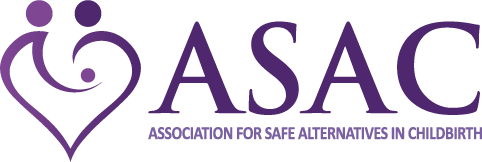
Placenta Encapsulation
Image by Dallas Currow
What is placenta encapsulation?
Placenta encapsulation is the practice of ingesting a placenta after it has been dehydrated, ground, and placed into capsules. The placenta may be steamed (also called TCM method) prior to dehydration or left raw before dehydrating. Herbs and spices are sometimes added during steaming or encapsulation. Most commonly, mothers encapsulate their own placentas to be used as a source of nutrients and hormones to support post-partum recovery, possibly including prevention of post partum depression. Some believe placentas may offer a variety of health benefits and it is also often recommend it for helping balance hormones (ie. to treat PMS, irregular cycles) and ease the transition to menopause.
What are the benefits?
Currently there is limited scientific research available regarding placental encapsulation and its benefits. Much of the evidence for benefits of encapsulation comes from anecdotal reports.
Some of the suggested benefits include:
Good source of heme iron to increase iron levels
Boost energy levels
Ease hormonal transitions
Decrease post partum depression
Boost milk production
Is it safe?
Placental encapsulation appears to carry no inherent risk if ingested solely by the mother. It is important to note that some mothers have reported experiencing negative symptoms from taking placenta pills – such as increased anxiety, decreased milk supply and jitteriness. It has been suggested that steamed placenta is milder and less likely to cause negative symptoms, possibly related to heat destroying some of the hormones and enzymes. Most of the information regarding placental encapsulation and consumption is passed along from anecdotes and personal experiences and not from research. In addition, taking placenta that was from another person or animal does carry the risk of passing along blood-borne diseases. Care must be taken during storage and transport of the placenta to prevent contamination and it must be stored either refrigerated or frozen while waiting to be processed.
Evidence Based Birth has reviewed the evidence on placenta encapsulation and is considered a reliable source of information: https://evidencebasedbirth.com/evidence-on-placenta-encapsulation/
Image by Vannessa Brown Photographer
How do I go about having my placenta encapsulated?
Placenta encapsulation is offered by many people in Alberta, often doula’s will offer this service. These individuals may have completed a variety of possible training courses, but be aware there are no regulations governing this practice. If you are considering placenta encapsulation, it is important to research the techniques used by your chosen provider to ensure the placenta is being handled safely. In addition to encapsulation, some mothers opt to consume the placenta by cooking it into foods or eating raw (often mixed into a smoothie). It can also be made into tinctures or mixed into topical products for cosmetic use. Regardless of the method of ingestion, care needs to be taken that the placenta is stored correctly, handled safely and processed properly (cooked, steamed, dehydrated, etc).
It is important to note that Health Canada considers placenta encapsulation to fall under the Food and Drug act, which has strict requirements for approval to sell or market placenta capsules (no one has been approved in Canada). https://www.canada.ca/en/health-canada/services/drugs-health-products/biologics-radiopharmaceuticals-genetic-therapies/applications-submissions/guidance-documents/human-placenta-products.html Many placenta encapsulators suggest they offer the SERVICE of encapsulating placentas (often in their clients own home) and do not sell the placenta products, which is not included under this regulation.
You may search our Community Resources and Business Listings for encapsulators in Alberta.


